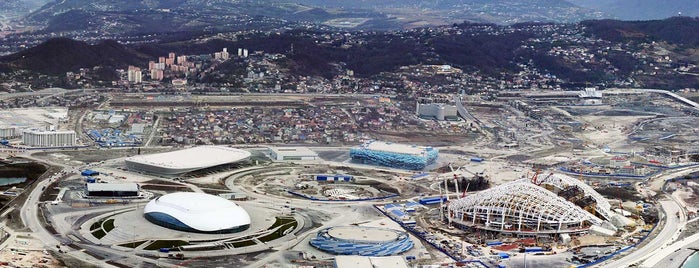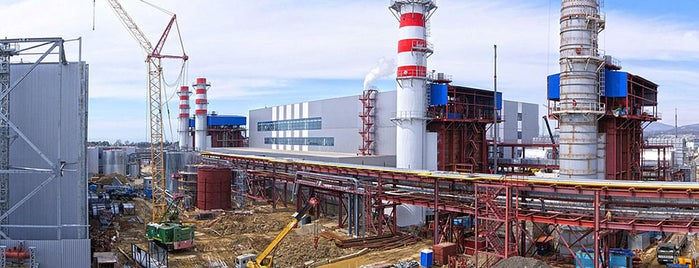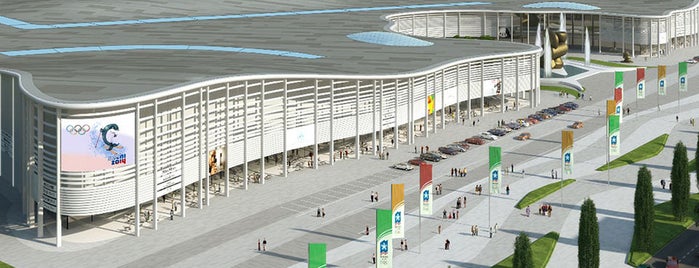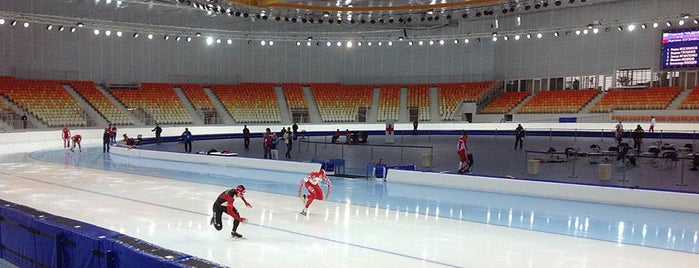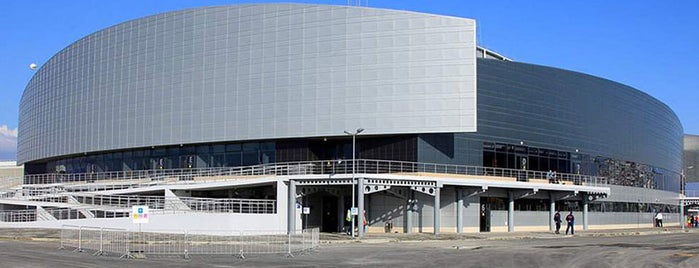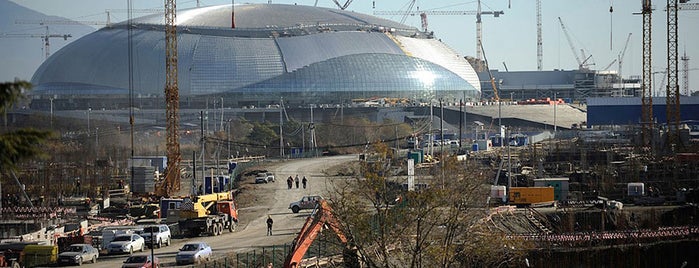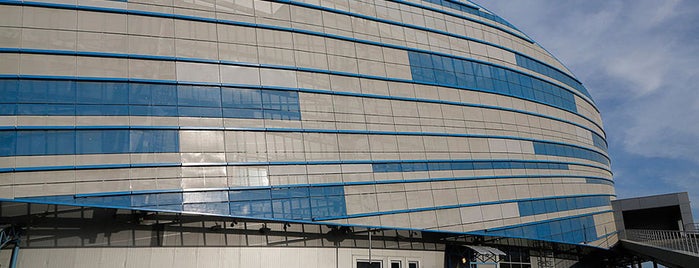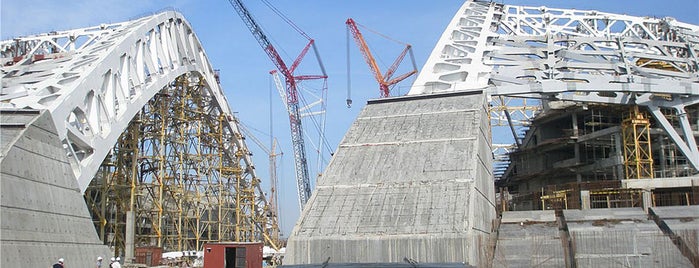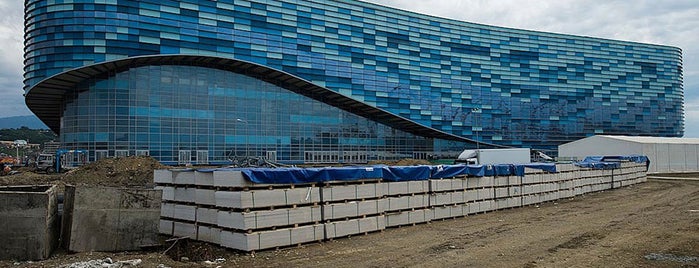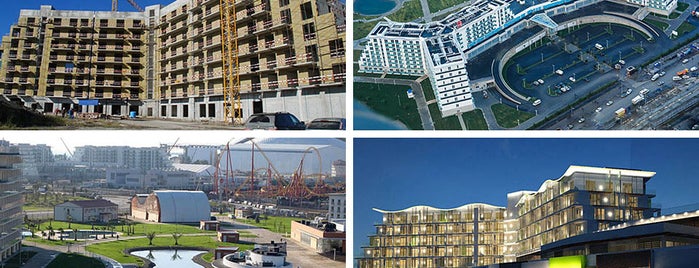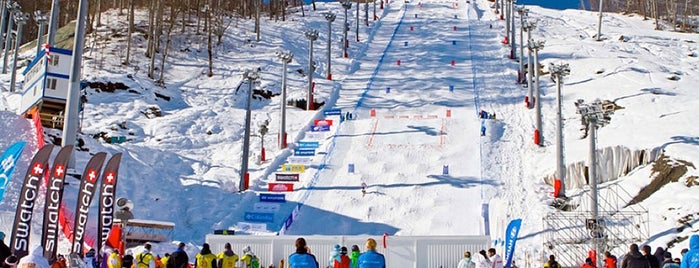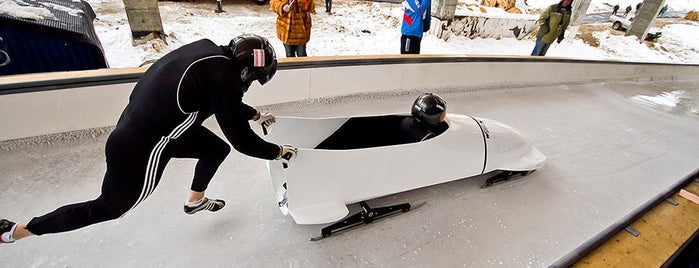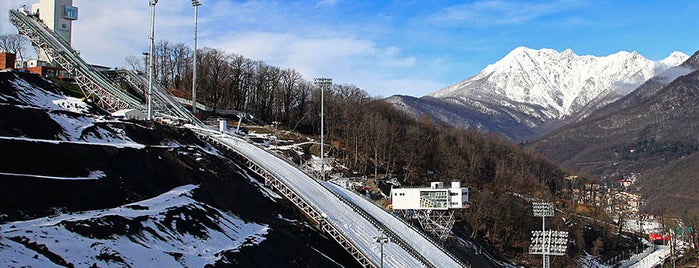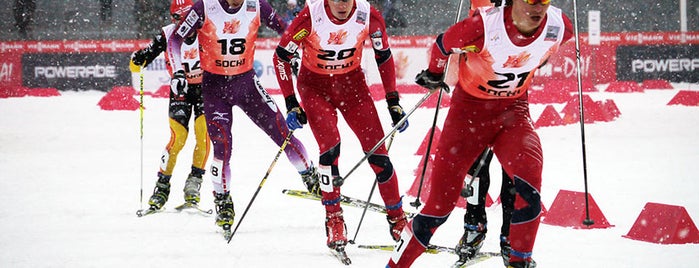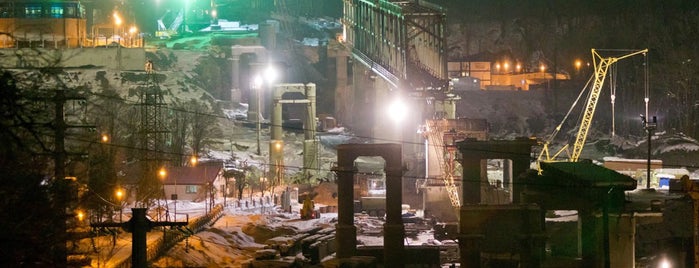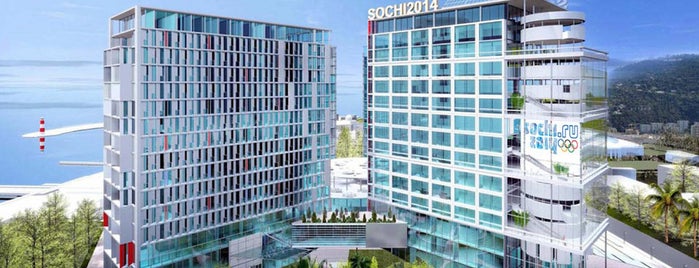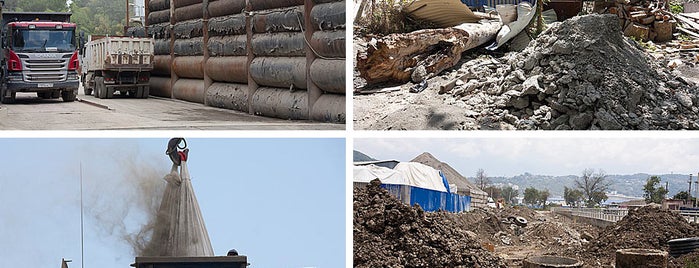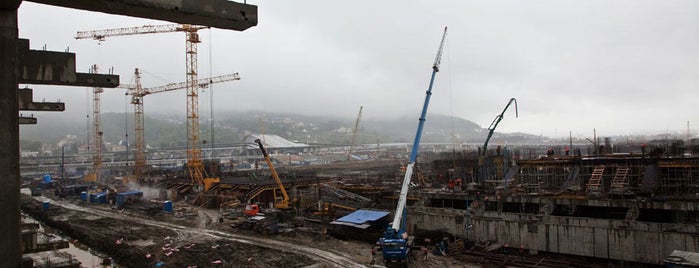![]() Athletes and IOC members will reside in this area during the Games. After the Olympics, the villages will be converted into a year-round resort complex called Sochnoye. Read more.
Athletes and IOC members will reside in this area during the Games. After the Olympics, the villages will be converted into a year-round resort complex called Sochnoye. Read more.
![]() Power cuts are quite regular in Sochi, and a new power plant was built in order to supply the Games. The construction was complicated by changes of ownership; deadlines were repeatedly pushed back. Read more.
Power cuts are quite regular in Sochi, and a new power plant was built in order to supply the Games. The construction was complicated by changes of ownership; deadlines were repeatedly pushed back. Read more.
![]() The largest media center in the history of the Olympic Games. The construction attracted the attention of Human Rights Watch due to systematic violations of migrant workers’ rights. Read more.
The largest media center in the history of the Olympic Games. The construction attracted the attention of Human Rights Watch due to systematic violations of migrant workers’ rights. Read more.
![]() An 8,000-seat roofed ice-skating center. According to unofficial sources, the cost of the project increased by seven to eight times during construction. Read more.
An 8,000-seat roofed ice-skating center. According to unofficial sources, the cost of the project increased by seven to eight times during construction. Read more.
![]() Russia’s only arena designed for curling competitions. Initial federal funding was $15 million. As expenses grew, the project attracted private investment. Still, the final cost reached $50 million. Read more.
Russia’s only arena designed for curling competitions. Initial federal funding was $15 million. As expenses grew, the project attracted private investment. Still, the final cost reached $50 million. Read more.
![]() This stadium was erected on former wetlands. This fact had not been considered in the original project. Forty percent of the allocated concrete was used to build a foundation pad. Read more.
This stadium was erected on former wetlands. This fact had not been considered in the original project. Forty percent of the allocated concrete was used to build a foundation pad. Read more.
![]() The initial projected cost of this arena was around $30 million, but more than $100 million was eventually invested in the project. After the Games, it will become a children’s sports center. Read more.
The initial projected cost of this arena was around $30 million, but more than $100 million was eventually invested in the project. After the Games, it will become a children’s sports center. Read more.
![]() The biggest and most expensive stadium in the Olympic Park. The original design was inspired by Fabergé eggs, but was drastically changed in favor of the Caucasus Mountains’ stylistics. Read more.
The biggest and most expensive stadium in the Olympic Park. The original design was inspired by Fabergé eggs, but was drastically changed in favor of the Caucasus Mountains’ stylistics. Read more.
![]() State investment in this project was estimated at $100 million, but expenses reached about $300 million. The venue was completed a year later than expected. Its post-Olympic legacy remains undecided. Read more.
State investment in this project was estimated at $100 million, but expenses reached about $300 million. The venue was completed a year later than expected. Its post-Olympic legacy remains undecided. Read more.
![]() Built for 3,000 locals whose lands fell within the construction area of the Olympic facilities. Only one-third of settlers agreed to relocate, whereas the rest preferred monetary compensation. Read more.
Built for 3,000 locals whose lands fell within the construction area of the Olympic facilities. Only one-third of settlers agreed to relocate, whereas the rest preferred monetary compensation. Read more.
![]() “A strategically significant” project in preparations for the Games, it is supposed to transform Sochi into a “Tourist Mecca.” However, analysts doubt that the future of the resort will be successful. Read more.
“A strategically significant” project in preparations for the Games, it is supposed to transform Sochi into a “Tourist Mecca.” However, analysts doubt that the future of the resort will be successful. Read more.
![]() Planned as a five-star spa-hotel, Chernomorets was later excluded from the Olympic program due to the following complications: land property controversy, ownership changes, pushed back deadlines. Read more.
Planned as a five-star spa-hotel, Chernomorets was later excluded from the Olympic program due to the following complications: land property controversy, ownership changes, pushed back deadlines. Read more.
![]() Russia’s largest mountain ski resort, dubbed “Russian Courchevel” after the luxurious resort in the French Alps. Total project investment is $2.2 billion, 1.7 billion of which was a state loan. Read more.
Russia’s largest mountain ski resort, dubbed “Russian Courchevel” after the luxurious resort in the French Alps. Total project investment is $2.2 billion, 1.7 billion of which was a state loan. Read more.
![]() The most expensive bobsled and luge track in the world. Considered the riskiest venue of the Sochi Olympics. On top of that, 27 hectares of the national park’s forest were cleared to build the track. Read more.
The most expensive bobsled and luge track in the world. Considered the riskiest venue of the Sochi Olympics. On top of that, 27 hectares of the national park’s forest were cleared to build the track. Read more.
![]() A symbol of the increase in cost of the Sochi Olympics—by over five times. The explanation was that unstable ground at the construction site required a concrete lining for the entire side of the hill. Read more.
A symbol of the increase in cost of the Sochi Olympics—by over five times. The explanation was that unstable ground at the construction site required a concrete lining for the entire side of the hill. Read more.
![]() One of the smallest international biathlon complexes. Belarus was supposed to invest in this project, but due to its gas conflict with Russia, Laura was transferred to the control of Gazprom. Read more.
One of the smallest international biathlon complexes. Belarus was supposed to invest in this project, but due to its gas conflict with Russia, Laura was transferred to the control of Gazprom. Read more.
![]() With investments amounting to $9.4 billion, this highway is the most expensive road in the world. To compare, the U.S. Mars exploration program cost about three and a half times less. Read more.
With investments amounting to $9.4 billion, this highway is the most expensive road in the world. To compare, the U.S. Mars exploration program cost about three and a half times less. Read more.
![]() Arguably the most useless and unlucky project of the Sochi Olympics. The idea to build a seaport stemmed from a сalculation error in cargo turnover, which was expected to be one-third higher. Read more.
Arguably the most useless and unlucky project of the Sochi Olympics. The idea to build a seaport stemmed from a сalculation error in cargo turnover, which was expected to be one-third higher. Read more.
![]() The only university in the world to specialize in sports management. To make room for this venue, the only part of downtown Sochi preserved in its pre-1917 state was demolished. Read more.
The only university in the world to specialize in sports management. To make room for this venue, the only part of downtown Sochi preserved in its pre-1917 state was demolished. Read more.
![]() The century-old sycamore alley in this unique botanical garden was badly affected by its proximity to Olympic construction sites. Funds were allocated for recovery, but the work has not started yet. Read more.
The century-old sycamore alley in this unique botanical garden was badly affected by its proximity to Olympic construction sites. Funds were allocated for recovery, but the work has not started yet. Read more.
![]() The decision to build this track in Sochi Olympic Park was made in 2010. But as analysts estimate, Formula One would hardly enjoy great popularity in Russia and will cause losses to investors. Read more.
The decision to build this track in Sochi Olympic Park was made in 2010. But as analysts estimate, Formula One would hardly enjoy great popularity in Russia and will cause losses to investors. Read more.

